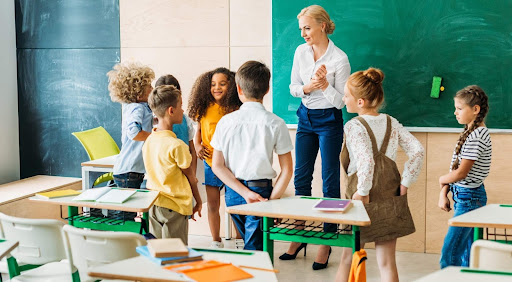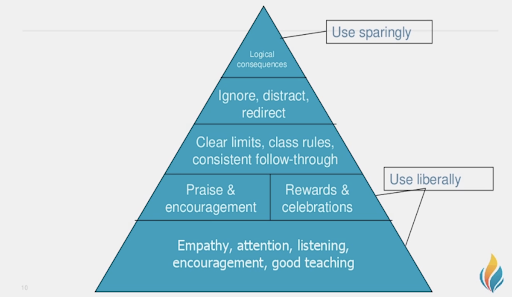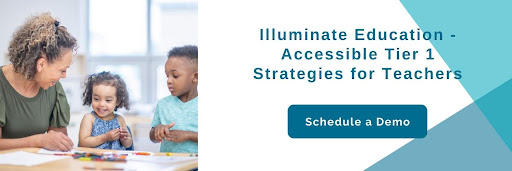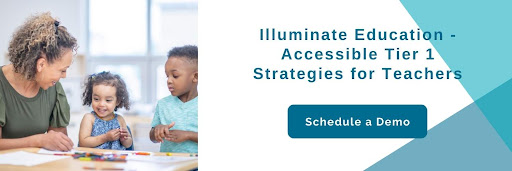Effective Tier 1 Teacher Strategies That Support an Engaged Classroom
It’s no secret that caregivers, parents, students, and educators alike are all feeling the effects of remote learning and the COVID-19 pandemic.
How can you as an educator implement Tier 1 strategies to address, encourage, or improve your students behavior and learning?
We’ll share nine effective Tier 1 teacher strategies that can help you…
- Engage your students; and
- Build a more effective learning environment
… whether you’re instructing remotely or in the classroom.

Table of Contents
- What Are Tier 1 Instructional Strategies?
- 9 Tier 1 Strategies to Implement in Your Classroom
- How Often Should You Use the Above Tier 1 Strategies in the Classroom?
- Improving the Quality of Tier 1 Instruction
- Learn More About Tier 1 Teacher Strategies With Illuminate Education
What Are Tier 1 Instructional Strategies?
Best practices at Tier 1 are designed to address students achievement and growth as a result
of effective initial instruction and include:
- Standards
- Assessment
- Core instruction; and
- Instruction and intervention
Tier 1 is considered the key component of tiered instruction, and is where all students receive instruction within an evidence-based, scientifically researched core program.
The Tier 1 instructional program is typically synonymous with the core reading or math curriculum that is often aligned with individual state standards.
9 Tier 1 Strategies to Implement in Your Classroom
#1: Prioritize Instructional Support
At the beginning of the COVID-19 pandemic, many families and educators were navigating the abrupt transition to remote learning, and many found it very difficult to come up with a consistent curriculum across all of those weeks.
The real challenge this year is knowing and acknowledging that there is a little bit of burnout for not only the children and the parents, but educators as well from continued remote or hybrid instruction.
As educators, the key to combating that burnout is through:
-
- Engaging with the passion you had as an educator when you started in the field; and
- Figuring out how to use some of these technological tools to do remote instruction in new ways or in ways that mimic some of the things that work very well in a whole class setting
For example:
-
- Some of the online portals allow for breakout rooms. Breakout rooms offer a way to help students work together and can help break up some of the lecturing or monotonous screen time and give them an opportunity to do some of the things that they enjoy doing when they’re in a classroom setting.
- A teacher may also arrange team projects so that students would have an action item and have to connect outside of the formal class lectures to figure out how to accomplish the assignment.
These are just a few examples of ways that an educator may vary the type of engagement that students have with their class.
But, in order for any of these strategies to be successful, it’s essential for educators to maintain an engaging, fun, and interactive teaching style regardless of the subject.
One of the biggest things to remember is that there is no replacement for strong curricula.
#2: Give Academic Praise and Feedback
In any kind of learning situation, the adult is usually providing corrective feedback if something’s not quite right or the student needs additional support.
In this Tier 1 strategy, the adult, or in this case, the educator, should also be noticing when a student is performing admirably, or completing skills correctly.
When you think about learning a new skill, it’s rare that that learning happens right away; most of the time, a new skill develops in small steps.
For example, think about when you see a child start to move to take their first steps. You likely celebrated each little milestone it took to get to those first steps. The pulling up onto a table, standing alone, the first few wobbly steps, and then, finally, walking over to you on their own.
That excitement and attention likely made them very excited, too, and encouraged them to keep moving forward.
Continue to embed this same approach in your classroom, just as your students have experienced as they first learned to add or subtract or spell.
Educators will want to balance correction with praise for learning academic content at a ratio of 3:1.
It’s important to provide feedback at the level the class is at, using a shaping procedure (successive approximations).
When you look at remote instruction, however, this approach can become difficult. A teacher’s attention may be divided between all of the children’s individual video squares making it challenging to interact and communicate with children fluently.
Think about incorporating more personal communications, whether by text or email, to continue to share academic praise and feedback.
Another very important thing to remember is that caregivers (ie. parents, grandparents, nannies, babysitters, older siblings) are the allies of educators in a remote learning environment.
Keep in mind that every child’s and every caregiver’s home situation is different. It may be that a caregiver is experiencing burnout from technical difficulties or not understanding how to help their child with a specific assignment.
Taking the time to share a child’s successes with their caregiver may go a long way in motivating them to continue supporting the child and their academic needs.
#3: Implement Academic Response Opportunities
Educators will naturally implement academic response opportunities whenever they can to try and get students to:
-
- Apply the material they have learned in new situations
- Extend what they already know; or
- Demonstrate what they know in a new interaction or a new assignment
Academic response opportunities in classrooms often work well because a teacher has the whole class in front of them and can be walking around and checking in and calling on students to participate. When a student is in a remote instruction environment, however, it can be easier for those who don’t want to participate to hide themselves in a sea of other screens.
Children might disengage by:
-
- Turning off their camera
- Turning their camera away from their face; or
- Putting themselves on mute
To help combat this, educators can let the children lead the conversation and let them do the majority of the discussion.
This can also be a very helpful tool in assessing whether or not the class truly understands or grasps the concept that is being taught.
To implement academic response opportunities in a remote setting, an educator may:
-
- Maximize opportunities for children to make academic responses
- Use whiteboards, surveys, peer-pairing
- Distribute opportunities across the whole class; or
- Assign independent work for strong concepts
#4: Provide Major Concept Summaries
If you look at student achievement, there can sometimes be a step back because they aren’t getting the academic repetition that they are used to getting throughout the whole school year of practicing these academic concepts.
With the COVID-19 pandemic, there has been more variability in the academic reps that students are getting due to the inconsistency of their learning environment.
It may be that you’ll see some children that got just as many reps as they would have gotten had they been in class from March until June.
A teacher may also see some children who weren’t able to get the reps that they needed — through no fault of their own — due to:
-
- A lack of technology or connectivity issues
- The unavailability of a caregiver who could be available to support them
Because of this, it may be that the gap between the students who are returning after a summer break may be larger than what we would typically see given a typical school year.
To address this gap, educators should continuously summarize the concept, skills, or key points frequently — even going overboard to make sure whoever is the furthest behind with these concepts can follow.
This approach can be particularly important during remote instruction. Repeating concepts frequently and asking the children to repeat back what the key concepts or the key points were can help check for understanding.
This helps children build a scaffold of important information that they can use to grow upon.
Looking for gaps in completed work is a way for educators to do some formative assessment and see if there’s an area of the concept that needs more remediation or discussion.

#5: Enforce Structure, Rules, and Routines
It would be impossible to shield students and young children from the stress or the anxiety that has been present in our world since the COVID-19 pandemic hit.
What can educators do to help children cope? Understand that students are coming from over a year of unpredictability. Educators can make their daily routines more predictable by:
-
- Having clear structure
- Providing clear routines; and
- Giving explicit directions for how things are to be done and completed
Rules should be positively phrased and tailored to activity.
In turn, students should experience reduced anxiety because they know what to expect and what is expected of them.
For example:
-
- Implement some standard procedures at the beginning and the end of every class lesson, whether in person or online, so students can link the two together.
- Communicate the schedule for the upcoming school year.
That routine becomes predictable for the student and aids in helping them transition back into the typical school schedule.
#6: Offer Attention and Praise
Offering personalized feedback (whether in a classroom setting or noticing positive behaviors, like balancing stress at home) is a key Tier 1 strategy.
Acknowledging a student’s good behavior or work and commenting on it while balancing that attention across all of the students in your class is really important.
Educators can take that praise a step further by sharing it with the student’s caregiver as well.
#7: Remember the Importance of Effective vs. Ineffective Requests
On that note, effective requests to guide students and their behavior are essential.
The clearer and more direct in the phrasing educators give to students, the better off the kids are going to be.
If it’s online or remote learning, effective requests are really important in written instructions.
When making requests to students to correct behavior, some ineffective requests include:
-
- Bad commands
- Commands issued when it is unclear if the student is paying attention
- Commands that contain multiple or vague steps
- Those issued as a question or contain unclear phrasing
- Behavior that is repeated without consequence
Instead, try these effective requests to redirect behavior:
-
- Wait until attention is gained before issuing commands
- Issue commands in specific, manageable steps with clear phrasing
Consequences for both compliance (ie. praise) and noncompliance (ie. repeat command) are shared, following the command
#8: Engage in Planned Ignoring
It’s safe to assume that the return to school is going to be difficult for some students as they’ll need to learn the necessary rules, structures, and routines again.
To help ease the transition, planned ignoring is a good strategy to use. Planned ignoring is a case where an educator chooses their battles.
You wouldn’t allow a student to exhibit disrespectful behaviors to you, swear in the classroom, or be aggressive. But, if a child is complaining or fidgeting, ignoring those smaller, menial behaviors could be a useful strategy.
Continue to compliment, notice, and acknowledge the good things that they’re doing.
To reiterate, planned ignoring could mean:
-
- Deliberately ignoring minor, inappropriate behaviors — especially if the behaviors are attention-seeking
- Attending to and returning to appropriate behavior
If in a remote setting, this could mean utilizing the mute button or deferring differential attention.
#9: Utilize Premack Contingencies and Transitional Warnings
Students’ stamina after returning to school from remote learning due to the COVID-19 pandemic may not be as strong as when they were attending school in person regularly.
Using premack contingencies means putting less preferable activities before a more preferable activity.
For example:
-
- “First, clean your room, then you can go outside.”
- “When you eat your vegetables, then you can have dessert.”
Premack contingencies can be useful when we think about our lessons that we are teaching students across different grade levels, up until 12th grade.
In a remote learning setting, this might look more like:
-
- “When we finish this PowerPoint, then we can do a group game.”
- “When we’re finished with this lecture, then you can be put in a breakout room and you can have some time to talk to your classmates.”
These examples may help students stay on task because they know there’s something good coming after the activity.
Premack contingencies puts activities in the right order, placing academic activities first, and help children know about and prepare for transitions or changes in routine.

How Often Should You Use the Above Tier 1 Strategies in the Classroom?
There’s always going to be a time when a teacher is going to have to give corrective feedback to a student, but if other consequences, like office visits, are being used frequently, that’s often a signal that the Tier 1 interventions are probably not working as well as they should be.
If they were working well, there wouldn’t be a reason for the student to misbehave and seek attention, since they should already be receiving that attention through positive strategies.
To reiterate, if the…
- Praise and encouragement
- Rewards and celebrations; and
- Empathy, attention, listening, encouragement, and good teaching
… strategies are implemented correctly, there should be less of a need to use:
- Logical consequences
- Ignore, distract, redirect
- Clear limits, class rules, and consistent follow-through

Strategies to Use Liberally
Examples of tier 1 interventions to use liberally include:
-
- Prioritizing instructional support
- Giving academic praise and feedback
- Implementing academic response opportunities
- Providing major concept summaries
- Enforcing structure, rules, and routines
As well as offering attention and praise when appropriate.
Strategies to Use Sparingly
Examples of tier 1 interventions to use sparingly include:
-
- Enforcing structure, rules, and routines (when appropriate)
- Remembering the importance of effective vs. ineffective requests
- Engaging in planned ignoring
- Utilizing premack contingencies and transitional warnings
Improving the Quality of Tier 1 Instruction
If you were to ask, “What’s the biggest thing they can do to improve their schools this next year?”, many schools would likely answer that it is improving the quality of Tier 1 instruction.
Why? The relationship between the teacher and student and what is happening in the classroom is most important.
What Does it Mean to Have High-Quality Tier 1 Instruction?
Having high-quality Tier 1 instruction starts with a valid and reliable curriculum that you can use for your students.
It should be consistent and standards-based and of the quality that we need it to be, really addressing the needs of our students.
It also means differentiation. We have to make sure that we’re differentiating instruction within Tier 1 (rather than push some students who aren’t learning into a Tier 2 or 3 intervention).
Strengthening Tier 1 Instruction
One of the best things you can do to strengthen Tier 1 instruction is:
-
-
- Use the fact that some students are struggling
- Identify why they’re struggling; and
- Build that into the way in which we’re instructing for all students
-
Formative assessment practice is a huge part of improving Tier 1 instruction.
In fact, if you had to define it very simply, formative assessment is a mechanism to inform teachers about what their students need, so that they can pivot their instruction to better meet their needs.
PLCs are also a huge part of improving Tier 1 instruction.
Teachers get to share about what’s working really well with students, and you can utilize the collective strategies from the group and implement them into your own classroom to make the entire Tier 1 instruction experience stronger for students.
Lastly, when you have students who are in need of a Tier 2 or Tier 3 intervention, or students who are in a Special Ed situation, think about those as innovation labs for Tier 1 instructional improvements.
They shouldn’t be the places you send students who need something different.
It should be the places where you send students to learn about what helps students learn better, and the best of those practices can get infused back into Tier 1 instruction to keep strengthening and growing the quality.
Learn More About Tier 1 Teacher Strategies With Illuminate Education
Illuminate Education aims to give educators the tools they need to effectively implement the Tier 1 instructional strategies list so their students and classroom can thrive and overcome the challenges presented by the COVID-19 pandemic.
Contact us today to learn more about implementing Tier 1 teacher strategies and how to turn Tier 1 data into action.
*****
Illuminate Education equips educators to take a data-driven approach to serving the whole child. By combining comprehensive assessment and MTSS management and collaboration tools, the Illuminate Solution enables educators to accurately assess learning, identify needs, align whole child supports, drive system-level improvements, and equitably accelerate growth for every learner.
Ready to discover your one-stop shop for your district’s educational needs? Let’s talk.



